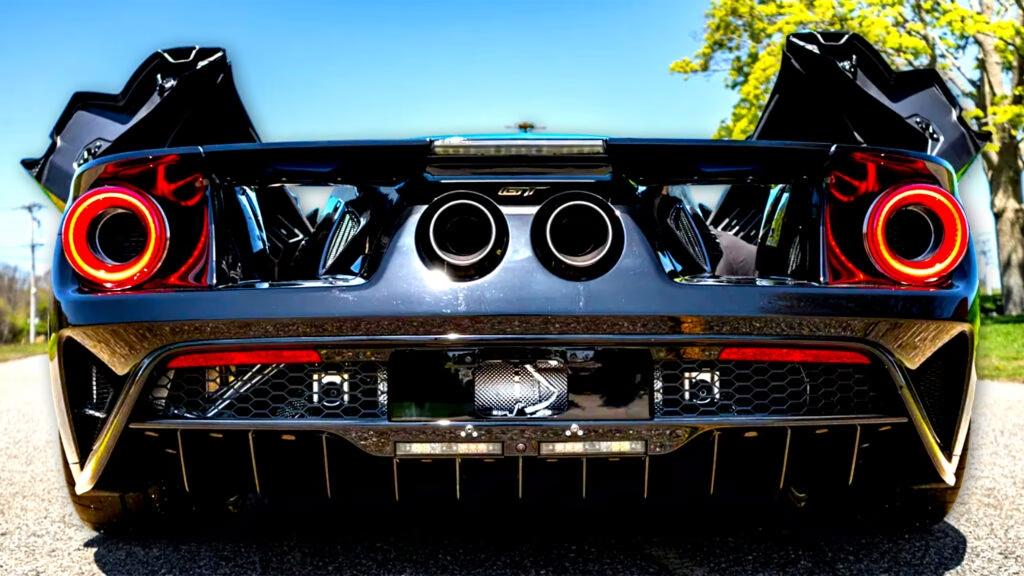A 2018 Ford GT with just 15 miles on the odometer recently made headlines when it sold for a staggering $837,500 at auction. This particular model, finished in a sleek Shadow Black with an additional $10,000 spent on racing stripes, has become a prime example of the peculiarities of the collector car market. Originally priced at $469,450, the sale price reflects a remarkable profit margin, raising questions about the nature of car ownership and investment.
Why Do Some Cars Become Museum Pieces?
Some cars are built to be driven, while others seem destined to become museum pieces. The Ford GT occupies a unique space in this spectrum. It’s not just a car; it’s a symbol of engineering excellence and a piece of automotive history. The allure of owning such a vehicle often leads collectors to treat them as trophies rather than machines meant for the open road. This phenomenon is particularly evident with the Ford GT, which has garnered a reputation for being both a high-performance supercar and a coveted collectible.
The auction for this specific Ford GT was conducted by Sotheby’s Motorsport, where it sold for $812,000 before the buyer’s premium was added. The auction listing indicated that the car had never been registered or driven, which is a rarity for a vehicle of its caliber. With only 15 miles on the clock, it’s practically new, yet it raises the question: will its next owner actually drive it, or will it continue to sit wrapped in bubble wrap?
The Investment Angle: Cars as Alternative Assets
In recent years, the collector car market has transformed into an alternative investment avenue. High-end vehicles like the Ford GT have shifted from being mere transportation to appreciating assets. This change has been fueled by a growing number of collectors who view cars as a viable investment strategy, similar to art or real estate. The significant profit realized from this auction—over $343,000 above the original MSRP—illustrates this trend perfectly.
The Ford GT’s exclusivity is a major factor in its investment potential. Buyers had to navigate a rigorous selection process to even be considered for purchase, and once they took delivery, they were barred from reselling it for two years. This restriction created a sense of scarcity that has only added to the car’s allure. When resale restrictions lifted, many Ford GTs hit the market, often fetching prices exceeding $1 million.
What Makes This Ford GT Special?
The 2018 Ford GT is not just another supercar; it embodies cutting-edge technology and design. The Shadow Black finish, combined with exposed carbon fiber elements and striking silver wheels, showcases its aesthetic appeal. However, it’s the performance that truly sets it apart. With a mid-engine layout and a powerful twin-turbo V6, the GT is engineered for speed and agility, making it a joy to drive—if only someone would take it out for a spin.
The Newport Car Museum acquired this GT from a private collection in 2021, though the details of that transaction remain undisclosed. What’s clear is that the museum likely made a sound investment, given the car’s recent auction success. The real mystery lies in whether the next owner will appreciate it as a driving machine or simply as a collectible.
The Collector’s Dilemma: Drive or Display?
For many collectors, the dilemma is real: do you buy a car to drive or to display? The Ford GT, with its racing pedigree and stunning design, is undoubtedly meant to be experienced on the road. Yet, the fear of depreciation and the desire to maintain its pristine condition often lead owners to keep it parked. This creates a paradox in the collector car market—vehicles that are engineered for performance are often relegated to the status of static displays.
As the collector car market continues to evolve, the balance between driving and displaying will remain a topic of debate. The Ford GT serves as a perfect case study in this ongoing conversation, highlighting the tension between passion and investment.
The big takeaway? Owning a car like the Ford GT isn’t about perfection—it’s about smarter adjustments. Start with one change this week, whether it’s taking that beauty out for a drive or simply appreciating it in a new light, and you’ll likely spot the difference by month’s end.

